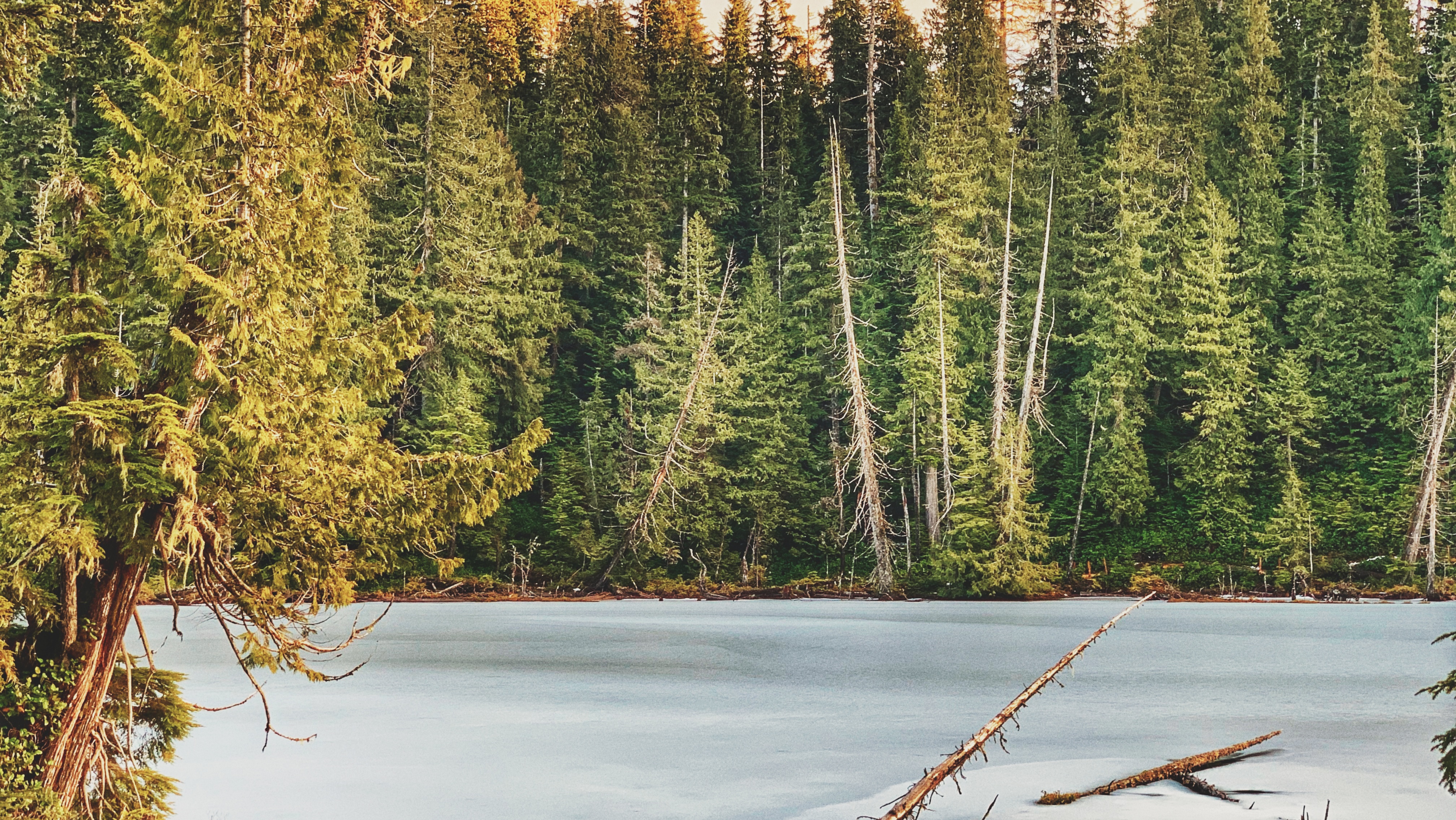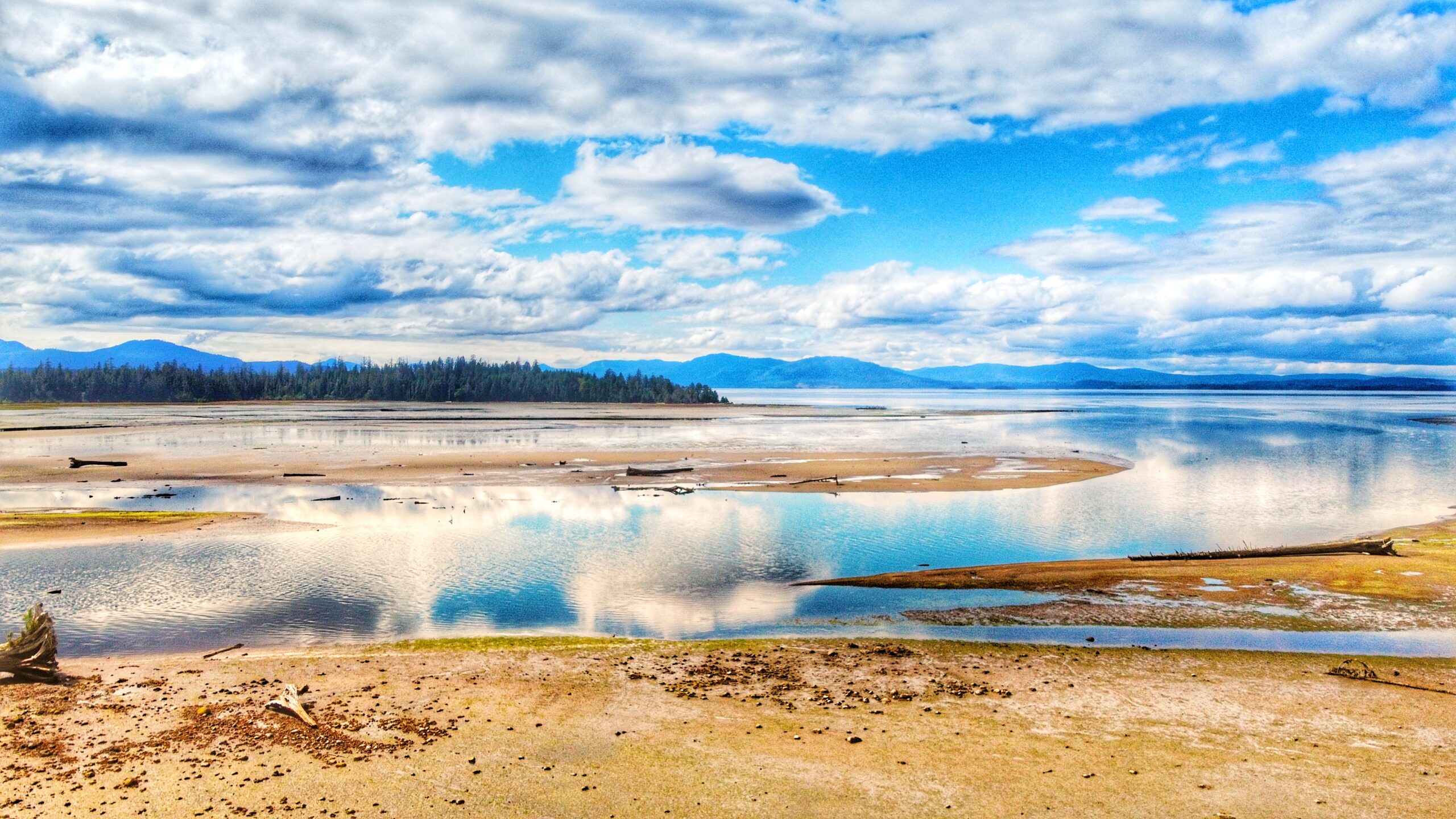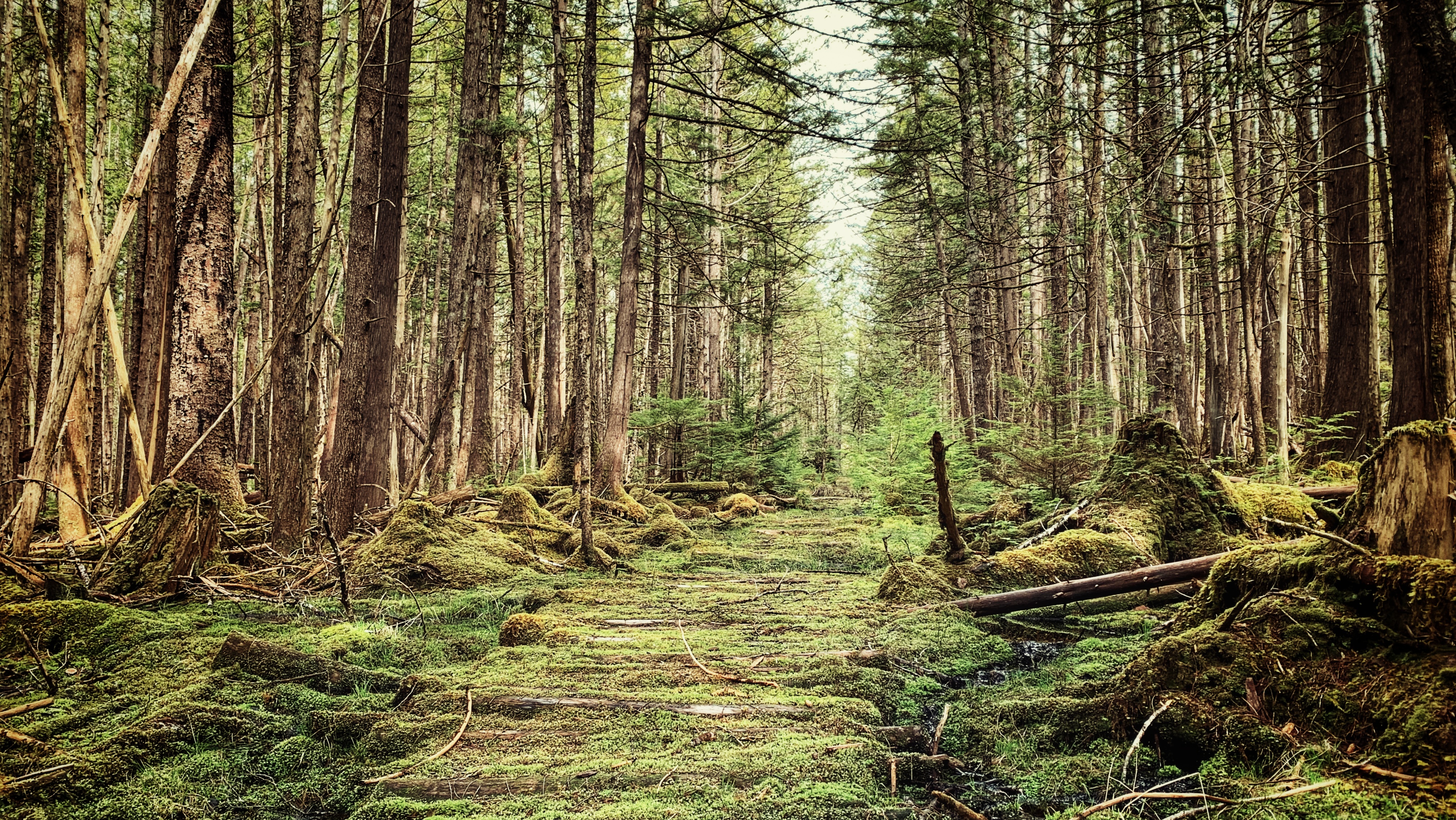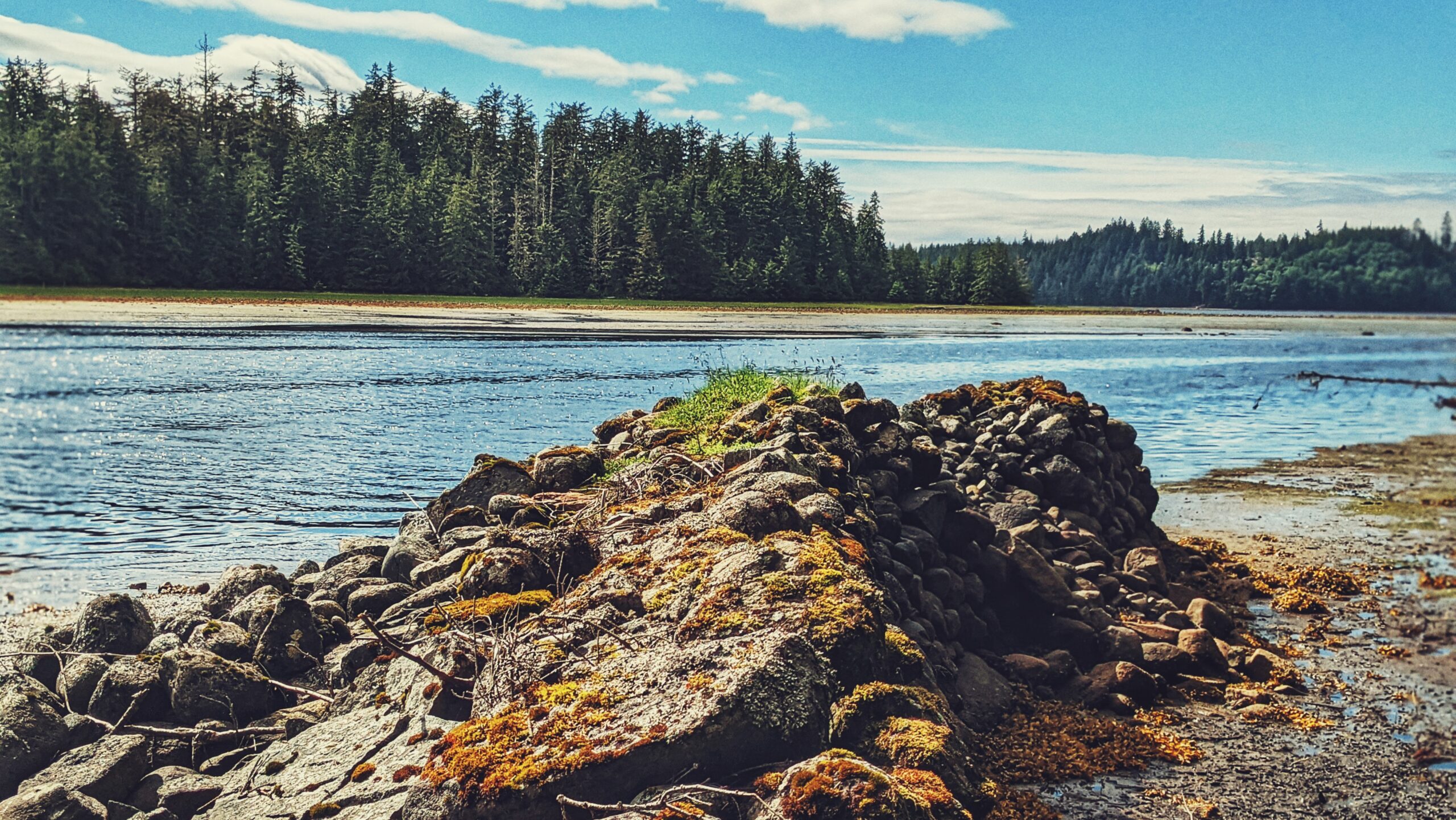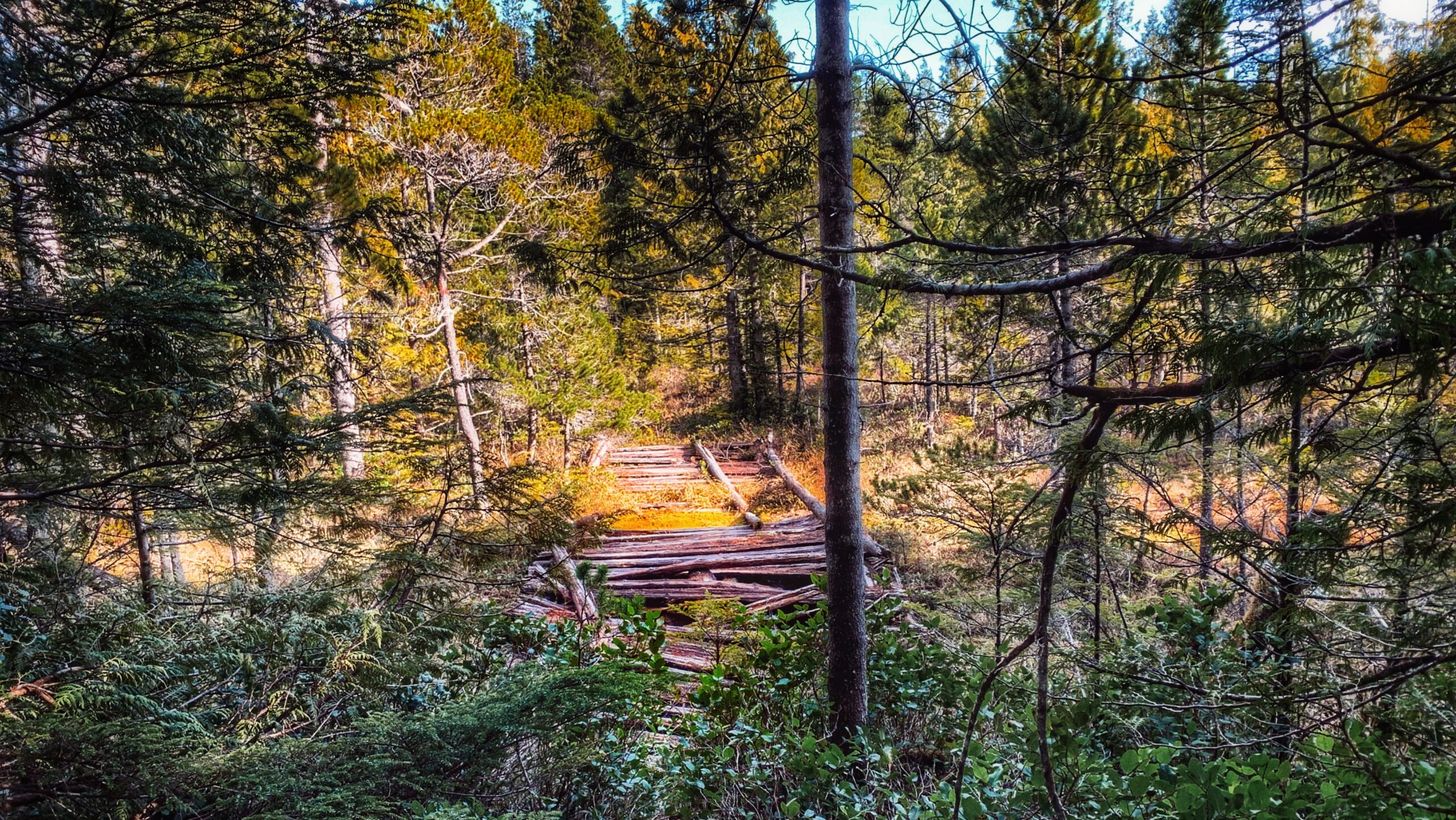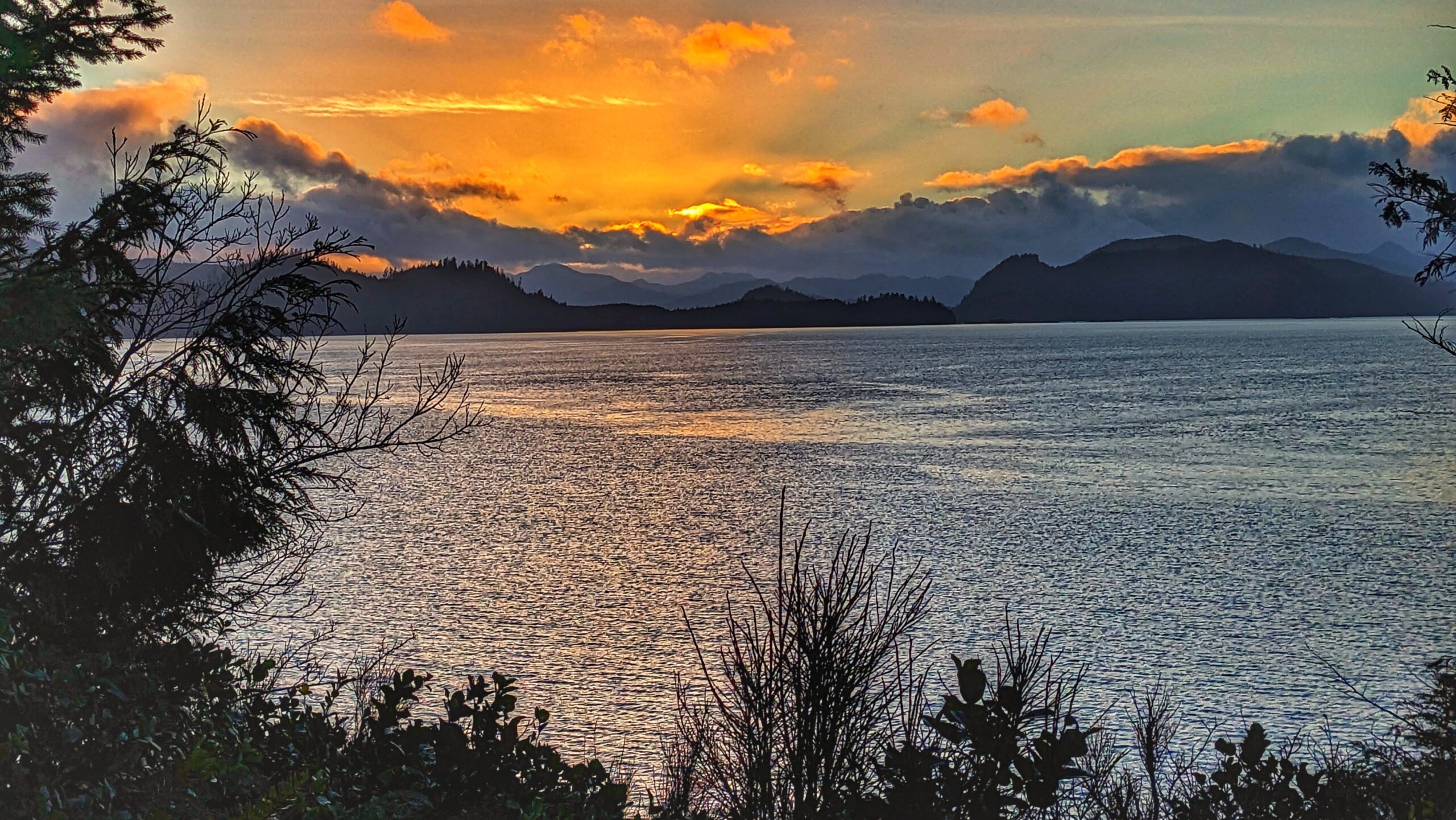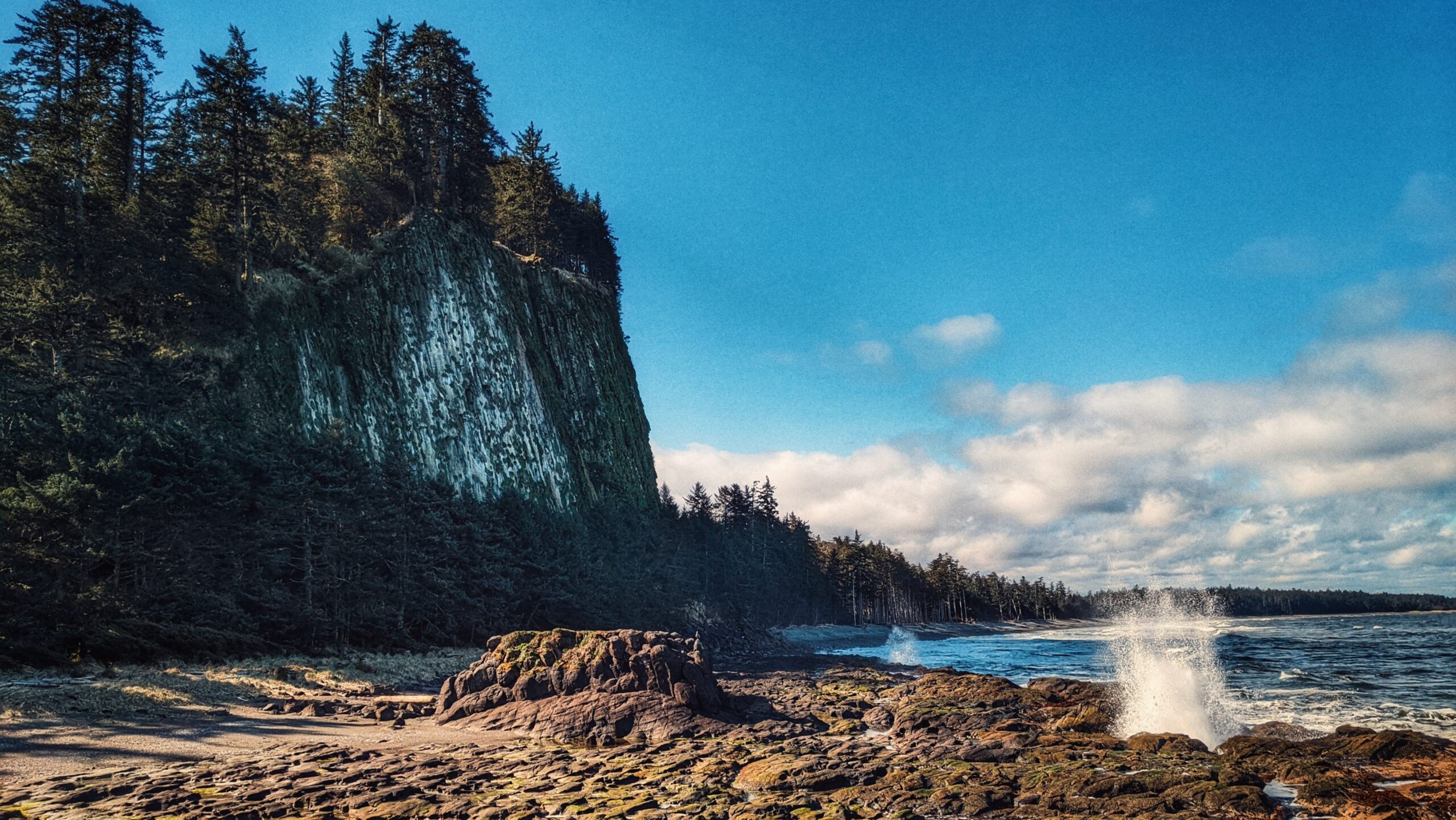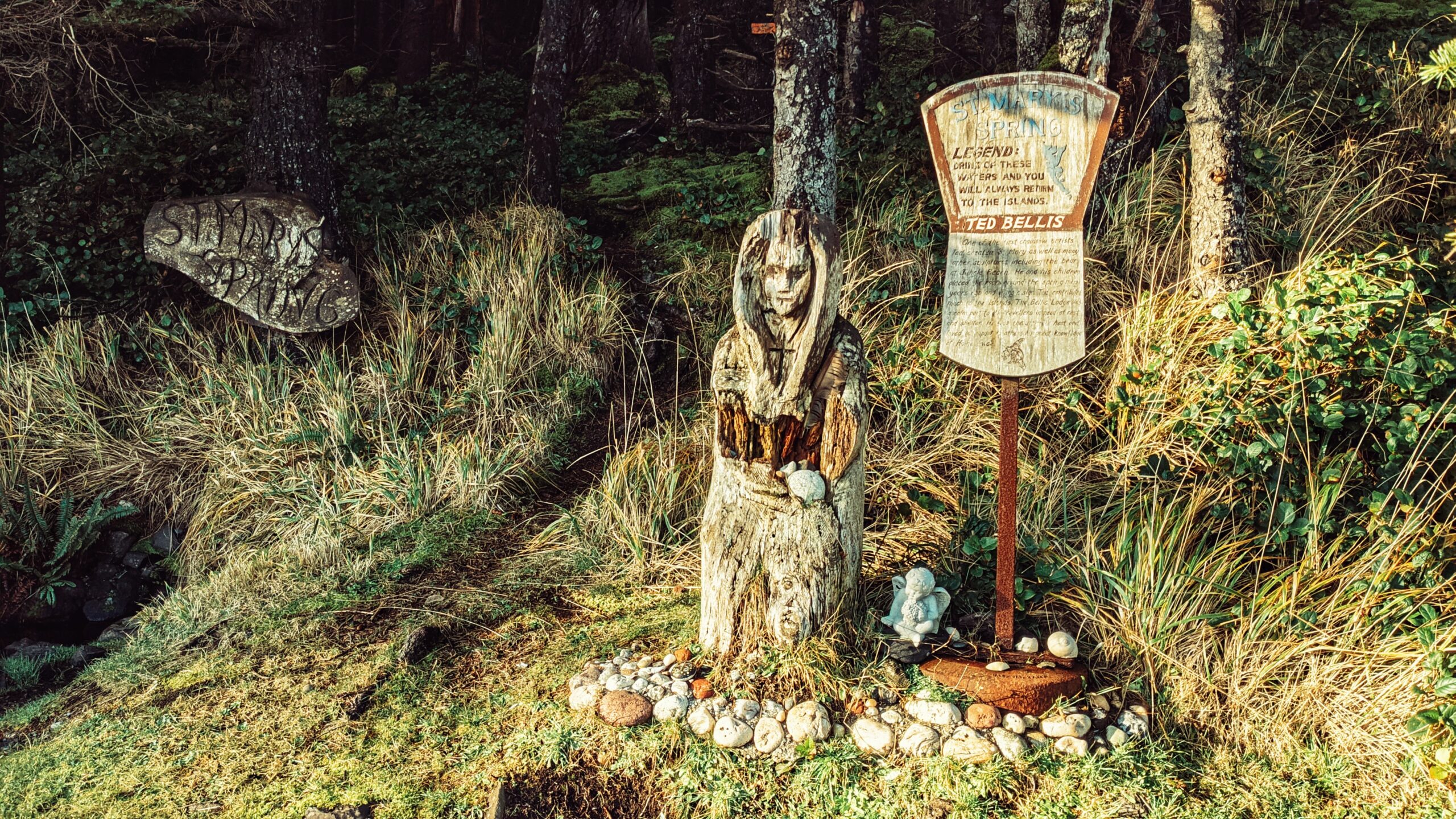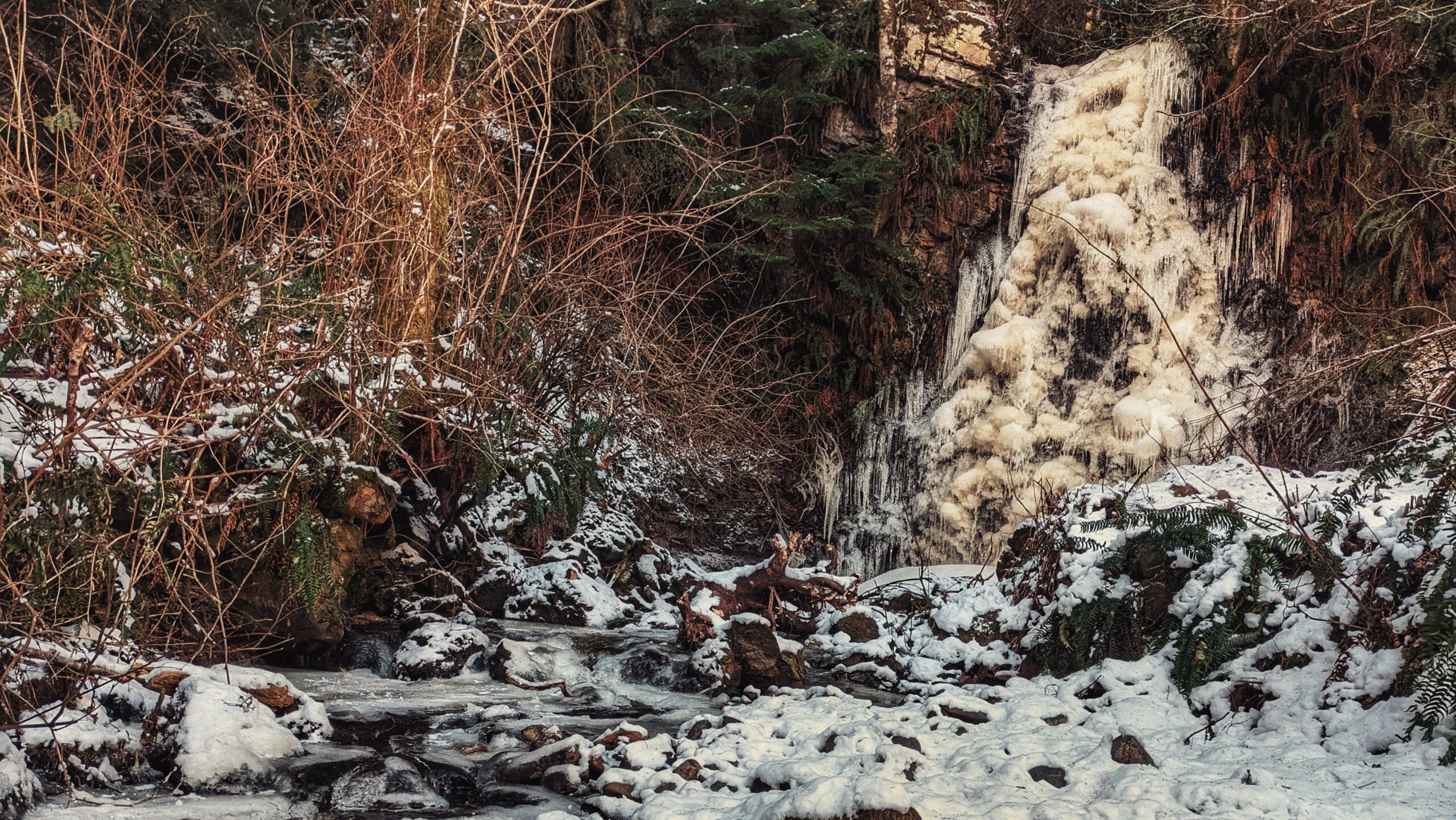Popular with tourists and locals alike, this well-maintained easy hike offers the curious a portal through which to view Haida Gwaii’s natural beauty: The carpeted moss floor; the meandering creeks; beautiful cedar and spruce trees; culturally modified trees (CMTs); a plethora of eagles and woodpeckers; wild blueberries and mushrooms; the large Haida Gwaii black bear; and, of course, Spirit Lake itself. Each of these elements complements the overall setting and lends a picture of serenity.
Category: Feature Spots
The Sunset Park Trail, located along Bayview Drive, is an easy 2.7km out-and-back trail in the Village of Port Clements. The terrain is flat and basically follows the Yakoun Estuary the entire way. The track is so flat, in fact, that Port Clements even suggests it is wheelchair friendly.
5-Mile Marker Waterfalls TrailQuick & easy to accessRelaxing spot ABOUT While there are a number of nice waterfalls on Haida Gwaii, most are either extremely remote and/or require a bit of effort to get to – some are some exceptions like the 5-Mile Marker Waterfall Trail. Then there are a select few that are relatively […]
Drive down Lawn Hill Road until you cross Lawn Creek Bridge. From here, and directly ahead, you’ll see a joke sign: “Violators will be prostituted.” This rather humorous sign indicates a private property; however, to your LEFT you will see a small yellow sign posted on an alder tree: “OLD WAGON ROAD.” This sign essentially signifies the start of your hiking adventure, but it is not the trailhead.
Located within the 2,722-hectare Kamdis Heritage Site/Conservancy, the “Evans Homestead” Trail was first brought to our attention via a series of old photos taken in 1957 by Terry Annis, and posted by Go Haida Gwaii. The ruins of the homestead, and the promise of massive rhododendrons, were most enticing. Unfortunately, directions towards this unmarked and unmaintained route are sparse.
The Nadu Homestead Trail – an old settler wagon road – is located approximately 20 kilometres east of Port Clements, heading towards Masset. Once you see the intersection for Nadu Road, you’ll know you’re in the right place – the trail is direct across the highway.
Onward Point Trail – While at the gazebo – gaze out towards Skidegate Inlet … you may even spy a grey whale or an orca in springtime.
Probably the most quintessential and well-known of Naikoon Provincial Park’s attractions, the Tow Hill and Blow Hole Trails hiking routes are easy and family-friendly, thanks to boardwalks that go their entire length. At the trailhead, which is approximately 26 kilometres east of Masset, you’ll be greeted by two small Haida totems, both of whom sit on either side of a large infographic. This interpretive panel helps set the context for the hike you’re about to embark on.
Unlike most places on Haida Gwaii, St. Mary’s Spring Trail is quite young in terms of its history. At the beginning of the 20th century, this area was known as “Duncan’s Well,” named after an early homesteader. It is said that travellers used to stop and re-hydrate their horses at the small well. Beginning in the early 1920s, however, Annie Richardson took it upon herself to name the spring after one she’d known in England – St. Mary’s.
HlGaa K’aayhlina Gandlaay, or Rock Sitting Creek, is something of a hidden gem hiding in plain sight – as it features Rock Sitting Creek Waterfall along its path. Because of its close proximity to the far more popular Balance Rock, this little waterfall is often overlooked. And that’s unfortunate because the water cascading down the rock cliff can be impressive – especially after a significant amount of rainfall.

